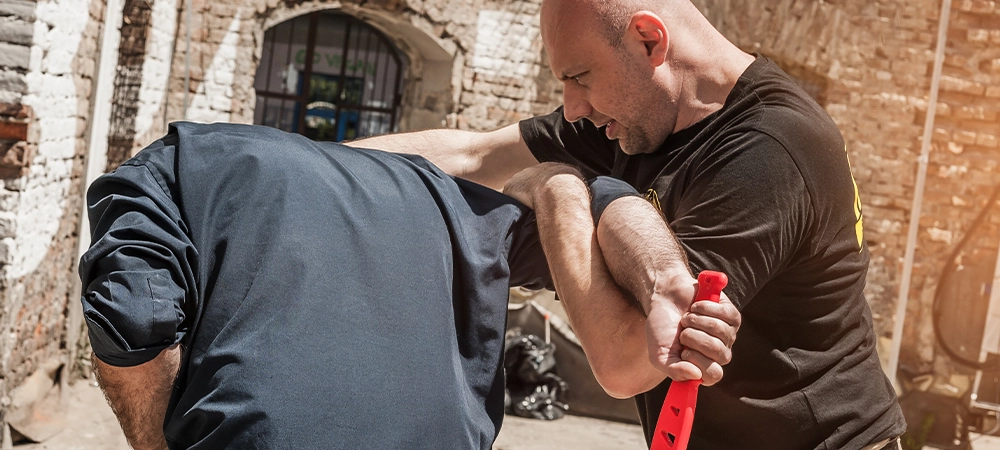In Canada, you have the right to protect yourself in certain situations. However, the line between lawful self-defence and criminal assault can be thin. This begs the question of how courts determine where the line gets drawn on self-defence vs assault.
That’s what we’re going to take a look at here, along with all the key factors that are considered in these cases. By the end, you should have clarity on when the argument of self-defence can be successful in court.
The Legal Basis for Self-Defence in Canada
The rules on self-defence can be found in Section 34 of the Criminal Code. This section was revised in 2012 to simplify the rules around self-defence. This not only applies to the force used to defend yourself, but also to the defence of others. Here are the checks that self-defence needs to pass:
- There are reasonable grounds to believe that force (or a threat of force) is being used against them or another person
- The act is committed for the purpose of defending or protecting yourself or another person
- The act committed was reasonable in the circumstances
If any of those parts of the test fail, then self-defence can’t be used.
Related Article: https://www.agpllp.ca/what-happens-if-you-are-charged-with-assault-in-ontario/

What Is Considered “Reasonable” Force?
It’s important that the response to the threat was reasonable. There is no set standard of reasonable force. Instead, it will be determined on the basis of each case. Here is what the courts will mainly consider:
- If the threat was verbal or physical
- If the threat was imminent or speculative
- Whether there was a chance to retreat or de-escalate
- The size, age, gender, physical fitness, etc., of all parties involved
- If anyone had a weapon
- Previous history of conflicts
- The accused’s state of mind
This isn’t a complete list, as the court will take anything that may be relevant into consideration. This includes any use of a weapon. This can complicate an argument of self-defence, but it’s still possible.
The court will want to know if the weapon was necessary and proportionate to the threat. For example, a weaker individual picking up a blunt object to protect themselves from a physically stronger threat would likely be seen as proportionate.
Related Article: https://www.agpllp.ca/how-to-beat-an-assault-charge-in-canada/
When Self-Defence Crosses the Line
As we mentioned, if any of the three elements of self-defence aren’t met, the court may deem the accused guilty of assault. Let’s take a look at these three elements in a little more detail.
1. No Reasonable Grounds to Believe in a Threat
Self-defence won’t apply if the accused didn’t actually face a threat or if their belief in a threat wasn’t reasonable. An example here would be hitting someone after a verbal insult. The accused may argue the insult was going to be followed by a physical threat, but the court may not agree.
2. Purpose Was Not Defensive
If the person acted out of anger, revenge, or to teach someone else a lesson, that is not self-defence. For example, the accused assaulted someone because they had previously hit a loved one and claimed they were protecting them. However, the intent for self-defence can’t be retaliation, and the action has to be from an immediate threat.
3. Force Was Not Reasonable
Even if the threat was real and immediate, the response must be measured. An example here would be continuing to beat someone after they ceased to be a threat. What could have been a genuine self-defence case would turn into an assault in this situation.
Burden of Proof: Who Has to Prove What?
In many defences, the burden is on the accused to prove their case. However, with self-defence, the burden is on the prosecution to prove the accused did not act in self-defence. This means that if you use force, you’re not automatically guilty of assault.
The Crown will try and argue that one or more of the three elements of self-defence were not met. The defence will still argue the point, but it’s the Crown that must prove beyond a reasonable doubt that the accused was not acting in self-defence.

What to Do If You’re Charged
If you’re facing assault charges but believe you acted in self-defence, emotions can run high. It can be tempting to plead your case immediately, but here are the steps you should take:
- Don’t make any statements or comments to the police without legal counsel present
- Speak to an experienced criminal defence lawyer immediately, who can guide you through the immediate steps
- Document anything you can, including injuries, proof of threats, photos, and potential witnesses
- Do everything your lawyer asks of you, as they will guide you on what steps you can take to strengthen your case
Related Article: https://www.agpllp.ca/what-to-do-if-you-are-arrested-in-ottawa/
Final Thoughts
In Canada, you have the right to self-defence. However, what can start as a genuine attempt to protect yourself can lead to assault charges if the response was excessive, retaliatory, or wasn’t based on a reasonable belief.
It’s due to this fine line that you need an experienced lawyer who can ensure there is enough doubt in the court’s mind to avoid a conviction. If you’re in need of legal help, contact AGP LLP today, and we’ll happily offer a free consultation to see how we can help.
